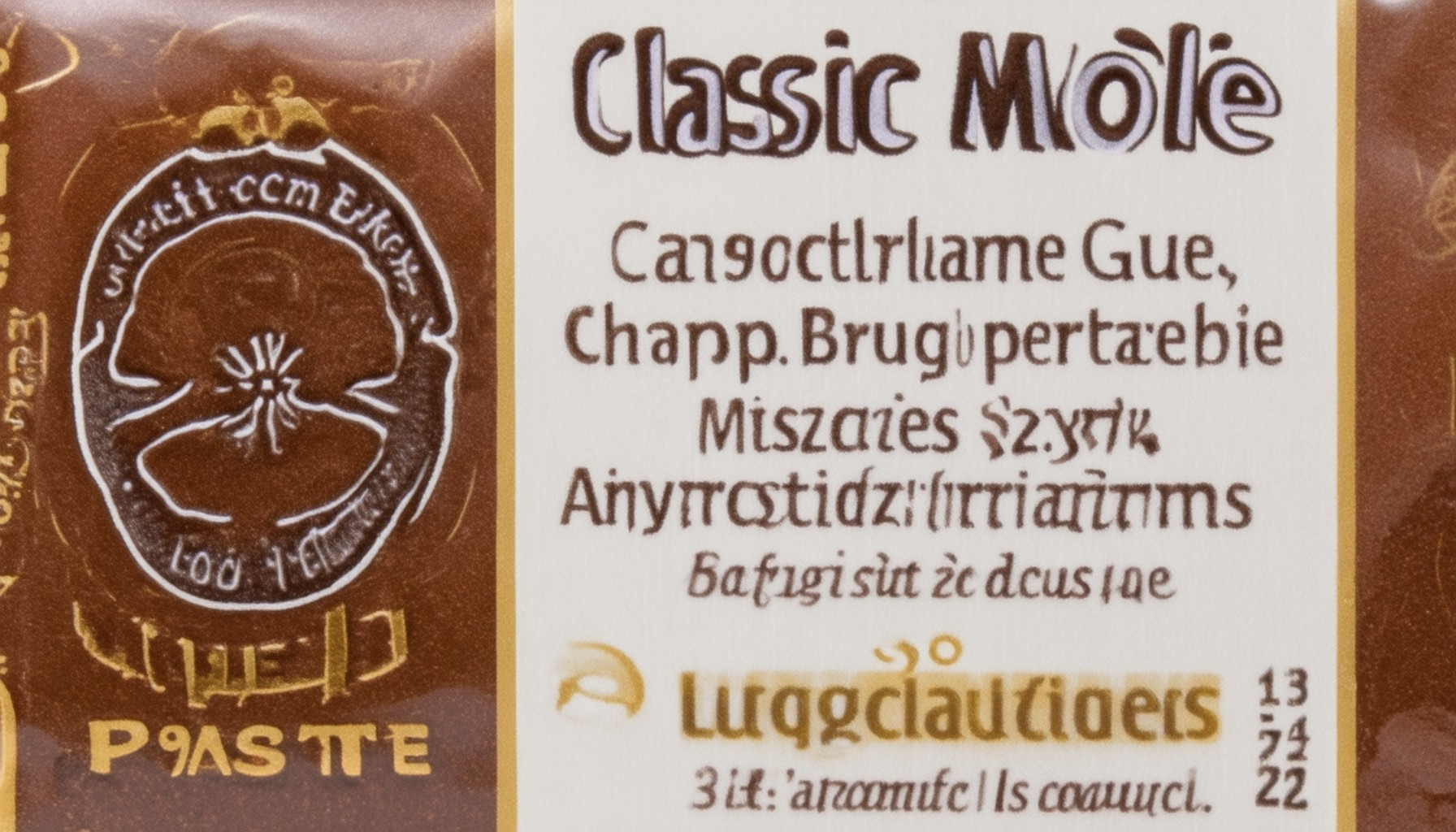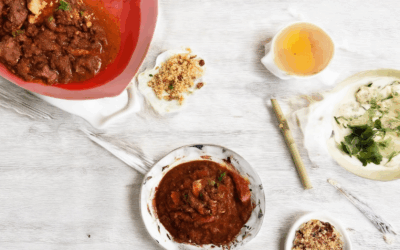Delving into the heart of Mexican cuisine, mole remains one of the most cherished and complex dishes, celebrated for its rich history and intricate flavor profile. Whether you’re a seasoned chef or a culinary enthusiast, the question often arises: what truly goes into crafting a timeless classic mole? In this article, we embark on a journey to uncover the authentic ingredients, techniques, and traditions behind this beloved dish. From the origins of mole in Oaxacan culture to the art of blending spices and chocolates, we explore the essential elements that make mole an irreplaceable part of Mexican gastronomy. Discover how to elevate your cooking skills with our guide to classic mole ingredients, and learn about the subtle variations that give this dish its unique charm. Whether you’re preparing an authentic Oaxacan mole recipe or experimenting with modern twists, this article offers valuable insights to help you master the art of mole.

What is in a Traditional Mole?
A traditional mole is a rich, complex sauce originating from Mexican cuisine, particularly in the Oaxacan region. It is a versatile ingredient used to enhance the flavor of various dishes, most commonly featuring chicken or turkey. Here’s a breakdown of the key components typically found in a traditional mole:
Ingredients:
- Chiles: A mix of different varieties, such as guajillo, ancho, and pasilla, contribute to the heat and complexity.
- Onions: Sautéed to add sweetness and depth.
- Garlic: Provides a subtle tangy flavor.
- Cumin: Adds earthiness and aroma.
- Coriander: Enhances the savory profile.
- Cinnamon: A warm, sweet note that complements the chili base.
- Cloves: Bring a hint of spice and fragrance.
- Sesame seeds: Often toasted and ground for a nutty flavor.
- Nuts: Typically almonds or walnuts, added for texture and richness.
- A small amount of chocolate: This is a key ingredient that gives mole its distinctive flavor and helps balance the heat.
- Raisins (optional): Sometimes added for a sweet-tart contrast.
Preparation Process:
- Sauté onions and garlic until softened.
- Toasted cumin, coriander, and cinnamon in a dry pan to release their aromas.
- Grind the spices and nuts into a paste.
- Boil chiles in water to soften them, then blend into a smooth chile base.
- Add the chocolate to the chile mixture and stir until melted and incorporated.
- Combine the spice paste with the chile-chocolate mixture, adding a bit of water or broth to thin it out.
- Simmer until the mole reaches the desired consistency, adjusting seasoning with salt and pepper.
Origin and History:
Mole has ancient roots traced back to Aztec cuisine, evolving over centuries into the rich, multi-layered sauce we know today. The Oaxacan region is renowned for its mole variations, with each community having its unique take on the recipe.
Variations:
- Oaxacan Mole: The classic version, rich and complex with a deep chocolate flavor.
- Veracruzano Mole: Spicier and includes tomatoes and orange juice for brightness.
- Yucateco Mole: A lighter version with fewer ingredients, often served with pork.
- Chimayo Mole: Made with special Chimecaan chilies and a smoky flavor.
Uses:
Mole is a versatile sauce that pairs well with meats, poultry, and even fish. It can be drizzled over dishes like tacos, tlayudas (Oaxacan-style pizzas), and soups for an extra layer of flavor.
By understanding these components and preparation methods, you can craft a traditional mole that captures the essence of Mexican cuisine.
What Ingredient is Added Into Mole?
Mole sauce, a iconic dish in Mexican cuisine, typically consists of several key ingredients combined to create a rich and complex flavor profile. Here’s a breakdown of the primary components:
- Chiles : At least two types of chilies are usually included to add heat and depth to the sauce. Common varieties used include ancho chiles, pasilla chiles, and guajillo chiles.
- Sour Component : Tomatoes or tomatillos are often used to introduce acidity and balance the sweetness of the dish.
- Sweet Element : Dried fruits such as raisins, figs, or prunes are sometimes added to provide a sweet contrast to the spicy and tangy notes.
- Spices : A blend of spices like cinnamon, cloves, cumin, and nutmeg are incorporated to enhance the aromatic qualities of the mole.
- Thickener : Ingredients like bread, nuts, or seeds are commonly used to give the sauce a velvety texture.
These ingredients are combined to create a multiplicity of flavors, making mole a versatile and flavorful dish that can accompany various proteins like chicken, pork, or beef.

Ingredients in Mole Poblano
- Dark cocoa or bittersweet chocolate
- Tomato sauce or tomato paste
- Dried chili peppers (such as guajillo or ancho)
- Onions
- Garlic
- Cumin
- Oregano
- Thyme
- Espazote leaves
- Cinnamon (optional)
- Clove (optional)
- Fresh cilantro or parsley (for garnish)
- Water or broth
- Salt and pepper to taste
- Nuts or seeds (optional)
- Fried tortillas (optional)

Does Original Mole Have Chocolate?
Mole sauce, a iconic dish in Mexican cuisine, has a fascinating history and evolution over time. While the traditional mole recipes did not originally include chocolate, modern interpretations often incorporate it. The addition of chocolate enhances the complexity and depth of the sauce, making it a popular ingredient in many contemporary versions.
History of Mole Sauce
Mole sauce traces its origins to pre-Columbian times, with various indigenous cultures developing unique flavor profiles. Initially, mole was prepared without chocolate, relying on a blend of spices, nuts, seeds, and fruits. Over time, European influences introduced chocolate to the mix, evolving into the rich, complex sauce we know today.
Why Chocolate?
Chocolate adds a velvety texture and subtle sweetness to mole sauce, balancing the heat of chilies and spices. It creates a harmonious contrast, making the dish more rounded and satisfying. Modern chefs often opt for dark, unsweetened cocoa powder or abuelita (a Mexican drinking chocolate) for their mole recipes.
Types of Chocolate Used
- Unsweetened Cocoa Powder : A common choice for mole, offering a deep, earthy flavor.
- Abuelita Hot Chocolate : Known for its spiciness, it adds a unique warmth to mole.
Mole Recipe Example
Here’s a simple recipe to try: Oaxacan Mole Negro (Black Mole)
Ingredients:
– 4 cups chicken broth
– 1 cup unsweetened cocoa powder
– 1/2 cup sesame seeds
– 1/2 cup almonds
– 1/2 cup pumpkin seeds
– 1/4 cup white rice
– 1/4 cup raisins
– 1/4 cup sugar
– 1/4 tsp ancho chile powder
– 1/4 tsp cumin
– 1/4 tsp clove powder
– 1/4 tsp cinnamon
Instructions:
1. Toast the seeds and nuts in a dry pan until fragrant.
2. In a pot, heat the chicken broth and add the toasted seeds, nuts, rice, and raisins. Simmer for 15 minutes.
3. Stir in the cocoa powder, sugar, and spices. Cook for another 10 minutes.
4. Serve with your favorite protein, such as chicken or pork.
For more authentic mole recipes and tips, visit Panito Mole , where we celebrate the rich flavors of Mexican cuisine.
Variations Across Regions
Mole varies by region, with Oaxacan-style moles tending to be sweeter and Veracruz-style moles featuring a tangier profile. Experiment with different variations to discover your personal preference.
By understanding the history and evolution of mole sauce, you can appreciate how chocolate became a staple in modern recipes, enriching the dining experience with its unique contributions.
What Does Mole Consist Of?
Mole is a rich, complex sauce indigenous to Mexican cuisine, particularly in the Oaxaca region. It is a hallmark of authentic Mexican cooking and is used as a base for a variety of dishes.
Ingredients:
Mole is typically made with a combination of ingredients including: – Chocolate (often dark cocoa) – Various types of chili peppers (such as ancho, guajillo, and chipotle) – Nuts and seeds (like almonds, peanuts, and sesame seeds) – Spices (cinnamon, clove, cumin, and others) – Dried fruits (such as raisins and prunes) – Tomatoes and onions – Herbs and aromatic plants (like thyme and epazote)
Types of Mole:
There are several variations of mole, each with its own unique flavor profile:1. Oaxacan Mole: The most traditional type, featuring a deep, earthy flavor achieved through the use of dark chocolate and a complex blend of spices.2. Veracruzano Mole: Originating from Veracruz, this mole incorporates tropical fruits and a lighter, fruitier taste.3. Yucateco Mole: Popular in the Yucatan region, this mole uses fewer ingredients and is often prepared with pork, making it a staple in dishes like cochinita pibil.
Serving Suggestions:
Mole is commonly served with: – Pork dishes such as carnitas or cochinita pibil – Chicken dishes – Eggs – Tlayudas (Oaxacan-style pizzas) – Fresh coriander and/or sour cream as garnishes
Culinary Significance:
Mole is not just a sauce but a cultural symbol in Mexico, representing the country’s rich culinary heritage and the skillful blending of flavors. Its preparation can take hours or even days, showcasing the attention to detail and love for food that defines Mexican cuisine.
By understanding the components and variations of mole, you can appreciate its complexity and how it enhances the dishes it accompanies.

Is Chocolate Always in Mole?
Mole sauce, a iconic dish in Mexican cuisine, is often misunderstood. One common misconception is that chocolate is a fundamental ingredient in every mole preparation. However, this is not the case.
Understanding Mole Sauce
Mole sauce, originating from Oaxaca, Mexico, is a complex blend of ingredients designed to complement various dishes. While chocolate can be an optional component in certain mole varieties, it is not universally required.
Key Ingredients of Mole
The base of most mole sauces typically includes: – Tomatoes – Chiles – Onions – Cumin – Cocoa powder (optional) – Various herbs and spices
The presence of chocolate varies depending on the type of mole and its regional origin. For example, Mole Rojo (Red Mole) often includes chocolate, whereas Mole Negro (Black Mole) does not.
Types of Mole and Chocolate Usage
- Mole Rojo : This classic version incorporates chocolate, adding depth and richness to the sauce.
- Mole Negro : This variant skips chocolate, relying on darkened tomatoes and other ingredients for its intense flavor.
- Other Varieties : Some regional moles may or may not include chocolate, depending on tradition and personal preference.
Recipe Example: Mole Rojo with Chocolate
For those interested in preparing Mole Rojo with chocolate, here’s a simple recipe: – 4 cups tomato sauce – 1 cup dried pasilla chiles, stemmed and seeded – 1 onion, finely chopped – 1 clove garlic, minced – 1 tablespoon cumin – 1 teaspoon oregano – 1 ounce semi-sweet chocolate, broken into pieces – 1 cup water or broth
Combine all ingredients in a pot and simmer for about 30 minutes. Adjust seasoning with salt and pepper to taste. Serve with your favorite protein source.
Conclusion
Chocolate is not always an ingredient in mole sauce. Its inclusion varies by type and region. Whether or not it’s used, mole remains a beloved dish celebrated for its complexity and versatility.





0 Comments